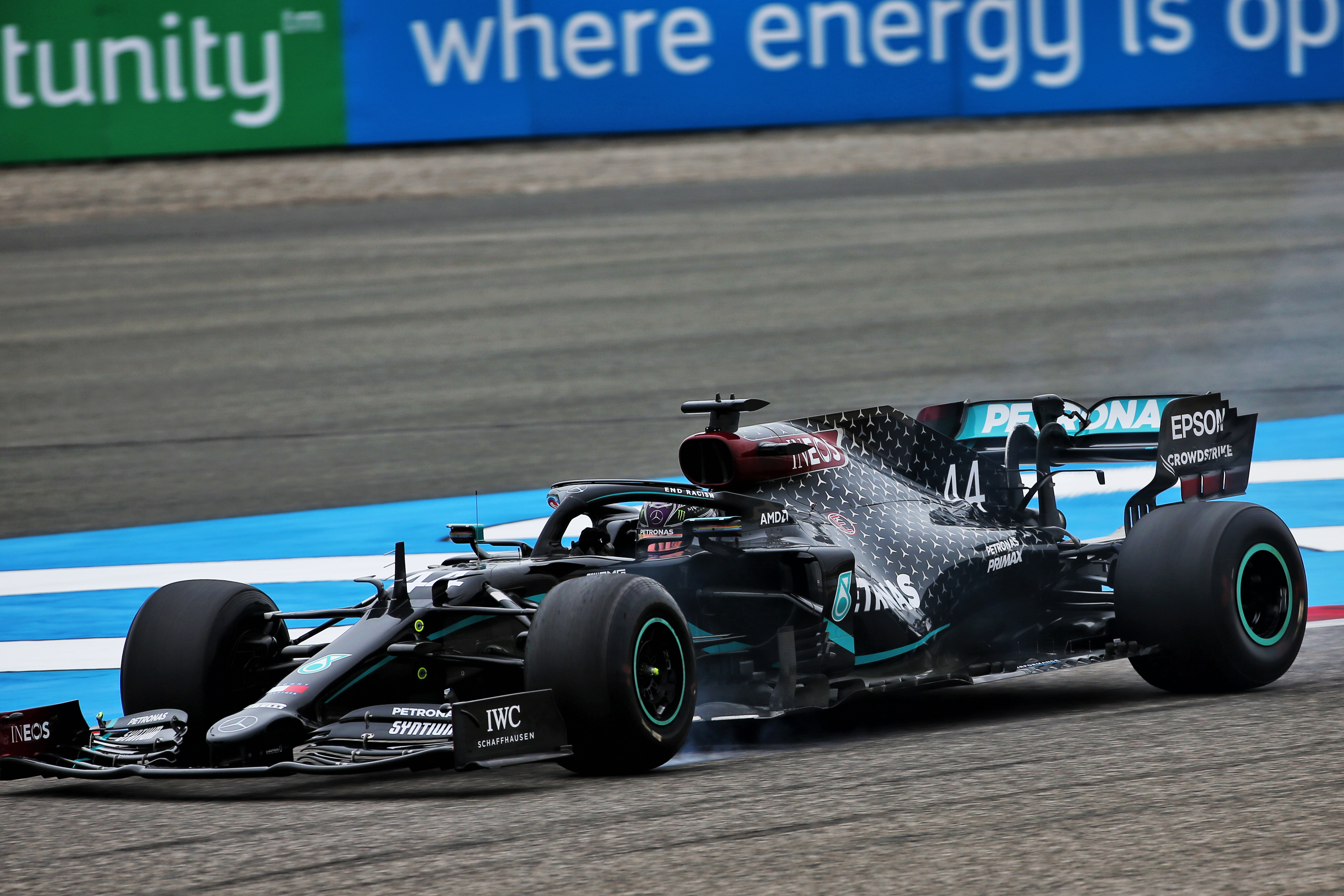Up Next

Lewis Hamilton has strongly criticised the lack of performance of Pirelli’s 2021 prototype Formula 1 tyres, which were used during Friday practice for the Bahrain Grand Prix.
All 20 drivers had two sets of what Pirelli is calling the 2021 homologated specification tyres, using the C3 (medium) compound version alongside the regular 2020 rubber during the two sessions.
Pirelli’s 2021 tyres are designed for improved integrity – but not improved performance – amid concerns about rising speeds and following the tyre failures suffered at Silverstone earlier this year.
But despite attempts to produce tyres that deliver on this without a loss of performance, Hamilton said the tyres were a second per lap slower than the current ones and suggested it would be better to stick with the current tyres next year.
“We’ve had the same tyre for the last two years,” Hamilton told Sky.
“At the end of 2019, they brought a new tyre, which each year they normally do, and it was quite a bit worse so then they said, ‘well, OK we’ll just keep the tyre that we had from last year’.
“If that’s all they’ve got and that’s the best that they can do, which it clearly is, then it would be better to just stay with this tyre” :: Lewis Hamilton
“So they’ve had two years now to develop a better tyre and we’ve arrived with a tyre that’s 3kg heavier and it’s like a second worse per lap.
“I know for the fans it doesn’t really make any difference. From a driver point of view, we’re working with brands and partners who are at the forefront of technology and if you’re going back[wards] after two years of development, I don’t know what’s happening.
“It definitely doesn’t feel good out there and it’s a worry. I’d prefer to just stay on these tyres.
“If that’s all they’ve got and that’s the best that they can do, which it clearly is, then it would be better to just stay with this tyre.”
Mercedes did more running on the new tyres in Sakhir practice than any other team, sacrificing some of its regular Friday set-up work and using the new tyres for 36 of its 139 laps.
Pirelli acknowledged that the new tyres were heavier but said the increase was closer to 2.5kg, and believes the time loss experienced today was more because cars’ set-ups are optimised for the 2020 tyres than the new tyres actually being slower.

Hamilton’s comments were backed up by a number of other drivers, including Red Bull’s Alex Albon.
“They’re slow and they’re not really very grippy,” he said.
“I reckon they’re about over a second off from what we have now, which doesn’t bode too well but we’ll see how it goes.”
Ferrari driver Sebastian Vettel called them “not a step forward – the opposite pretty much”, adding “I hope we don’t see these tyres again” because “it will make all the problems that we’ve struggled with already only worse”.
Pirelli carried its 2019 tyres over into 2020 after teams unanimously rejected the proposed new designs having tested them late last year.
The impact of the COVID-19 pandemic led to the new F1 technical regulations, which included a switch to 18-inch wheels and low-profile tyres, to be postponed to 2022 and meant these tyres are being carried over for a third season next year.
But a combination of concerns about rising speeds – albeit with a set of four aerodynamic rules tweaks designed to combat that next year – and failures at the British Grand Prix earlier this year, has led Pirelli to work on modifications to the specification for 2021.

While the compounds themselves are unchanged, the construction has altered. This also allows the recommended minimum pressures to be dropped, with the fronts 1.5psi lower and the rears 0.5psi lower for the prototype sets used in Friday practice.
These changes have not been made with performance improvements in mind. Pirelli has also had to sign off the design with testing limited to runs of various prototypes during Friday practice in Portugal – as well as what Pirelli calls ‘indoor’ testing simulation work – prior to producing the final 2021 spec used today.
“We tested the new prototypes in Portimao, we made an analysis of the results of the test collecting all the feedback from drivers, all the telemetry data,” said Pirelli F1 boss Mario Isola recently in explaining the process.
“We identified a prototype that is an improvement compared on the current specification.
“All the prototypes we decided to bring to Portimao had a higher level of integrity, so the target was to design prototypes with a higher level of integrity and all the solutions that we brought to Portimao had this kind of approach.
“What we were missing was the drivability, the performance of the tyres on track, so we did different prototypes that we supplied to the teams and we identified a combination of a new front and a new rear that are an improvement in our opinion.”





